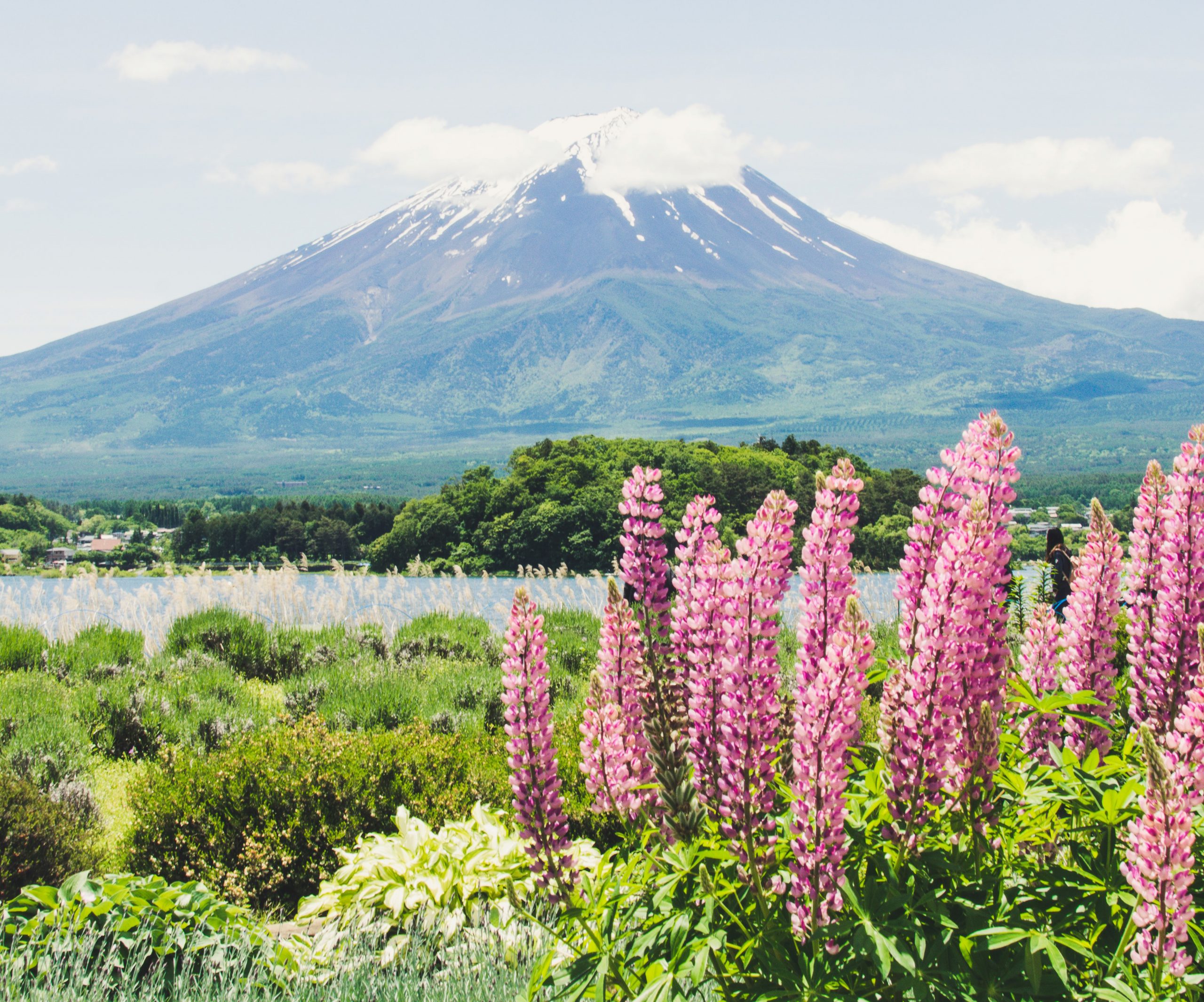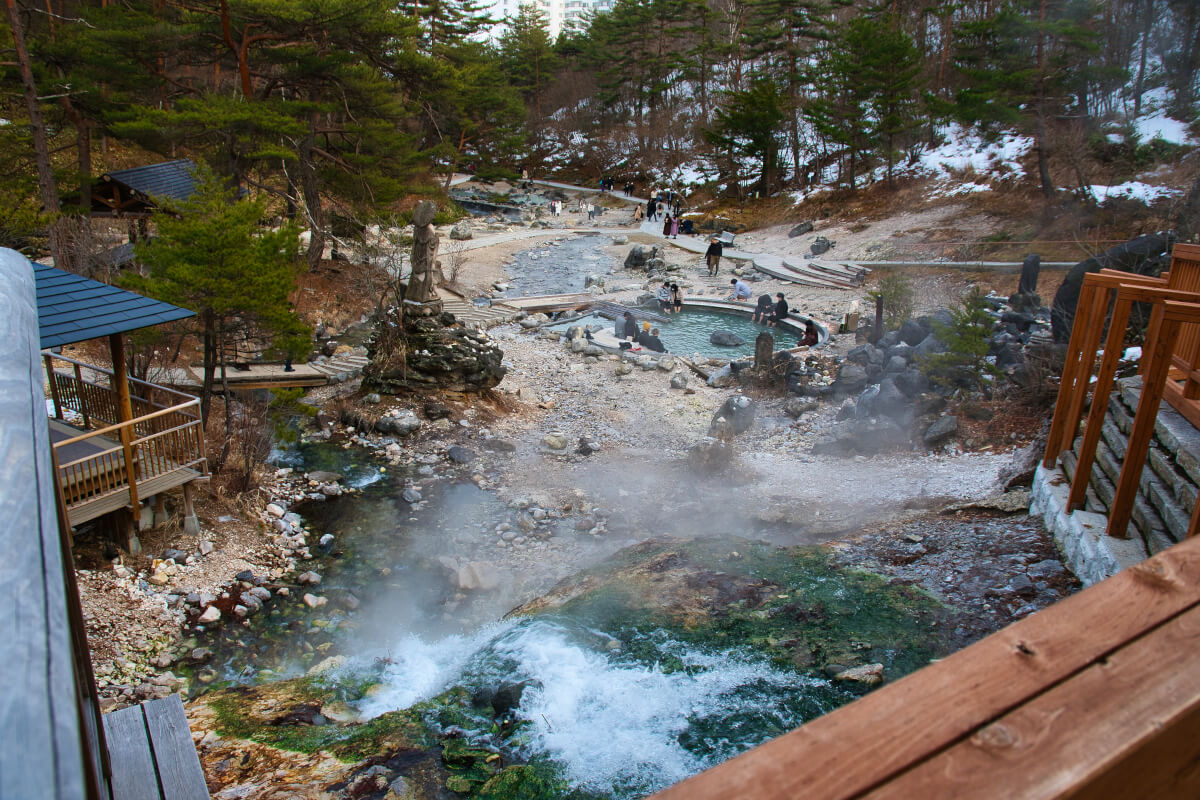Wherever you travel in Japan, you are always welcomed by stunning sceneries created by abundant nature. The rich nature often comes along with popular tourist attractions that include historic structures and cultural buildings that were made back in the old days. But of course, there are also the big cities with their modern townscape for you to discover. There are countless numbers of beautiful places worth visiting dotted over the country, and its variety will surprise you when you embark on a journey exploring the fascinating country. We have selected some of the most beautiful places in Japan that are worth a visit!
- 1. Shirogane Blue Pond (Hokkaido/北海道)
- 2. Yamadera (Yamagata/山形)
- 3. Hoshitoge Rice Terrace (Niigata/新潟)
- 4. Mt. Fuji (富士山)
- 5. Ogasawara Islands (Tokyo/東京)
- 6. Shirakawago (Gifu/岐阜)
- 7. Nachi Katsuura (Wakayama/和歌山)
- 8. Togetsu Bridge (Kyoto/京都)
- 9. Takeda Castle (Hyogo/兵庫)
- 10. Tsunoshima (Yamaguchi/山口)
- 11. Nabegataki (Kumamoto/熊本)
- 12. Takachiho Gorge (Miyazaki/宮崎)
- 13. Miyako Island (Okinawa/沖縄)
- 14. Utsukushigahara (Nagano/長野)
- 15. Lake Towada (Aomori/青森)
- 16. Shiretoko National Park (Hokkaido/北海道)
- 17. Yakushima (Kagoshima/鹿児島)
- 18. Shodo Island (Kagawa/香川)
- 19. Kamikochi (Nagano/長野)
- 20. Jodogahama (Iwate/岩手)
- Japan Wonder Travel Tours
- Articles you may also like
1. Shirogane Blue Pond (Hokkaido/北海道)
Shirogane Blue Pond is a scenic pond located in Biei town in the heart of Hokkaido. It was accidentally created by the construction of an artificial dam along the Shirogane river. The stunning bright color is made by the chemical composition brought by water stemming from the Shirogane hot spring located upstream of the river. The particles in the water reflect the sunlight, which results in the fascinating blue color that is clearly visible to us. It is a magnificent sight all year round, but the best season to enjoy the mystic pond is in fall with beautiful autumn leaves!

2. Yamadera (Yamagata/山形)
Yamadera (山寺), also known as Risshaku-ji Temple, is a Buddhist temple located in Yamagata prefecture. It was established in 860 by Ennin, a priest who officially received the decree of Emperor Seiwa. You can explore historical buildings standing along the steep 1,000 steps leading to the top of the mountain. Kaizendo is one of the main halls that offers a panoramic view along with the adjacent red structure called Nokyo-do. The beauty of the temple is also described in works by Matsuo Basho, one of the most famous poets in Japan. You can spot some of them carved in rocks while walking through the mountain.

3. Hoshitoge Rice Terrace (Niigata/新潟)
Hoshitoge Rice Terrace is a symbolic scenic spot in Niigata prefecture. About 200 rice paddies cover 150 hectares, creating a beautiful natural landscape. It changes its color and appearance each season with the beautiful surroundings. The best season to visit is June and September, when you can get a high possibility of catching a glimpse of a sea of clouds along with scenic paddies filled with water. The water absorbs and reflects the colors that vary depending on the time and season, which creates a breathtaking view!
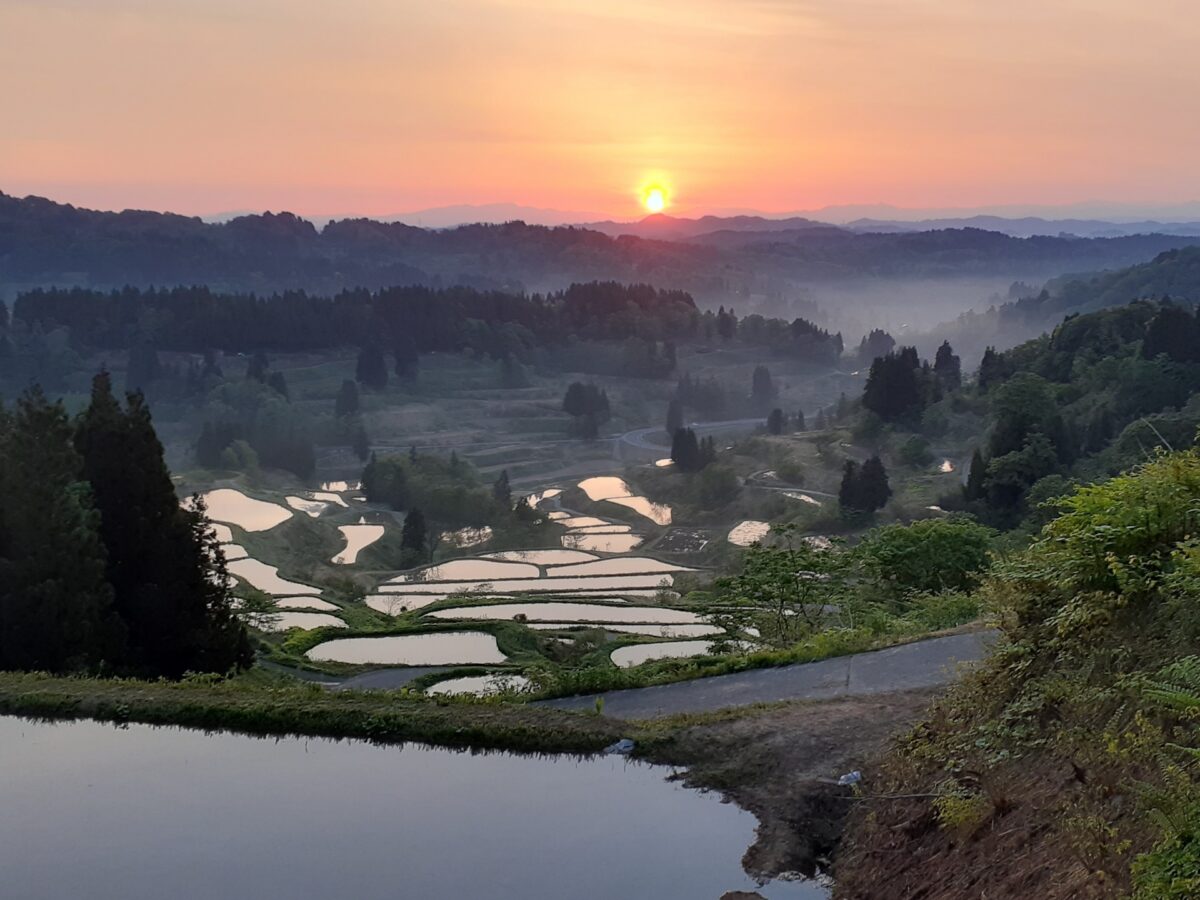
4. Mt. Fuji (富士山)
No list of beautiful places in Japan could ever be complete without the iconic Mt. Fuji on it. Fuji-san is the famous tallest mountain in Japan, located on the border between Shizuoka and Yamanashi prefecture. The majestic mountain has been loved by many over centuries and attracts tourists from all over the world. There are several hiking trails to the summit as well as at the base of the mountain. The hiking trails at the base of Mount Fuji are enjoyable, even for beginners. Head to Arakurayama Sengen Park to enjoy the famous view of Mount Fuji and the beautiful five-story pagoda. Fuji Five Lakes refer to five scenic lakes that offer a range of outdoor activities and form the perfect setting for admiring Mount Fuji.

5. Ogasawara Islands (Tokyo/東京)
Ogasawara Islands is a cluster of remote islands that are located approximately 1,000 km south of the center of Tokyo. Thanks to the isolated location, it boasts a unique diversity of ecosystems of flora & fauna, some of the marine life and other wildlife that can be spotted only here in Japan. Chichijima and Hahajima are the only inhabited islands which are accessible by ferry. The emerald green ocean and white sandy beaches allow you to unwind away from the bustle and hustle of big cities. It was officially designated as a UNESCO World Heritage Site in 2011.

6. Shirakawago (Gifu/岐阜)
Shirakawago is a peaceful village located in a mountainous area in Gifu prefecture. It welcomes visitors with a number of traditional Japanese houses that date back over 100 years. The houses are constructed in a traditional architectural style called Gassho-zukuri: thatched roofs sloped from both sides, designed this way so that snow falls off easily. It also resembles the shape of two hands put together for praying at shrines or temples. In summer, you can walk around the beautiful village surrounded by lush greenery, whereas winter offers a stunning scenery of the Gassho-zukuri style houses in a winter wonderland.

7. Nachi Katsuura (Wakayama/和歌山)
Nachi Katsuura in Wakayama prefecture is home to a number of scenic spots that are part of “Sacred Sites and Pilgrimage Routes in the Kii Mountain Range” listed as UNESCO World Heritage Site. Nachi Katsuura consists of historical structures such as the three grand shrines of Kumano and the hiking trails part of the ancient Kumano Kodo pilgrimage route across the sacred forests. Nachi Katsuura played a significant role as the center of a unique religious mixture of Shinto and Buddhism, and has been visited by famous and powerful people throughout history. It is also popular among foreign tourists as a great spot to enjoy refreshing trekking while exploring historical sites as well.
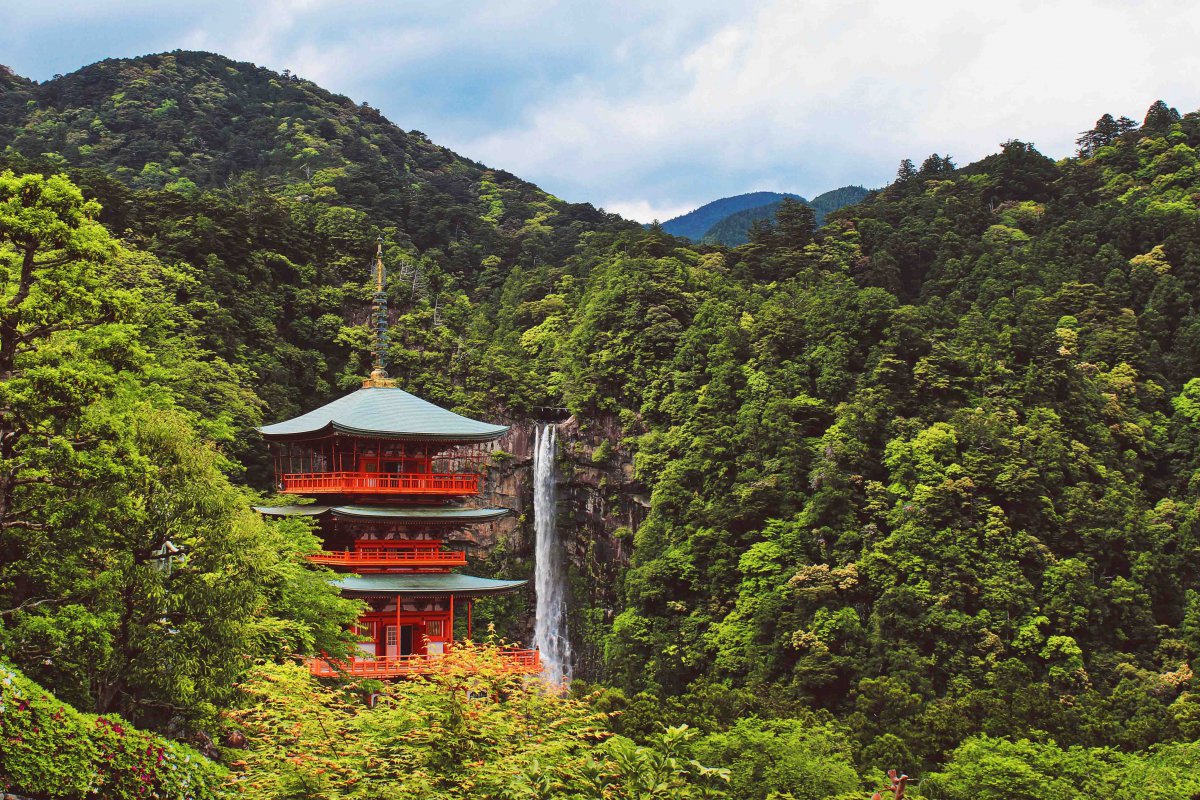
8. Togetsu Bridge (Kyoto/京都)
Togetsu Bridge is the iconic bridge located in the Arashiyama area in western Kyoto. The original bridge was built in the 9th century and later reconstructed several times because of the damage caused by typhoons and floods. The 155-meter bridge connects both sides of the Katsura River. Togetsu means moon crossing in Japanese. According to the local story, Emperor Kameyama described the moon moving over the bridge as “the moon is crossing the bridge”, earning it its name. The bridge draws large crowds of visitors especially in spring with beautiful cherry blossoms, and in fall with stunning autumn colors!

9. Takeda Castle (Hyogo/兵庫)
Takeda Castle stands at 353.7 meters on the summit of Mt. Kojo in Hyogo prefecture. It is often referred to as the “Machu Picchu of Japan” or “castle floating in the sky” because of the impressive scenery created by the sea of clouds. It was originally established in the 15th century, but only some ruins such as stone walls remain in good condition. Although the main buildings no longer exist, it never disappoints visitors with the breathtaking views created by beautiful clouds and other peaks surrounding the sacred site.

10. Tsunoshima (Yamaguchi/山口)
Tsunoshima is a scenic island located in the west of Yamaguchi prefecture. It is connected to the mainland of Japan with a large bridge called Tsunoshima Ohashi, which was completed in 2000. The 1,780-meter bridge allows visitors to access the beautiful island while enjoying the ocean views, which in itself is already a popular tourist attraction worth visiting. Try delicious fresh seafood at local restaurants or take a relaxing stroll at the sandy beach. Enjoying a stunning sunset at the Tsunoshima Lighthouse will also add an unforgettable moment to your time in Japan!
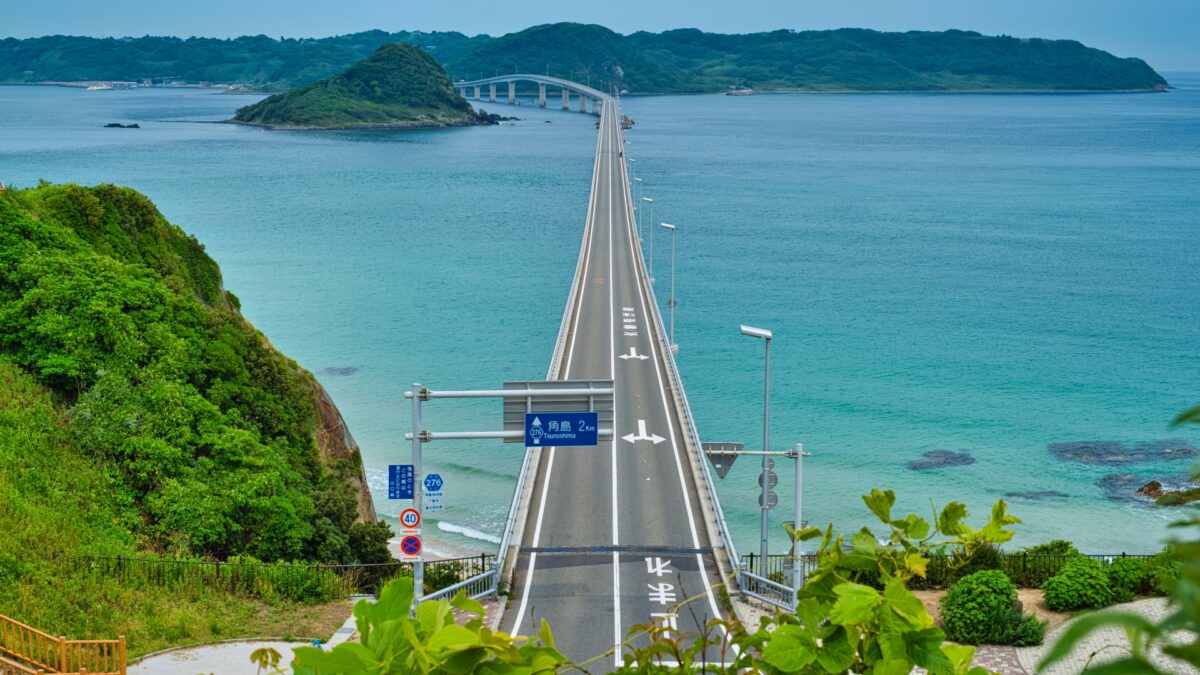
11. Nabegataki (Kumamoto/熊本)
Two hours drive north-east from JR Kumamoto station takes you to Nabegataki, one of the most famous waterfalls in Japan. It is only 10 meters tall and 20 meters wide, but what makes it special is the fact that you can walk behind the falls and enjoy it from the opposite side too. The water falls down in the basin peacefully, creating a stunning view of thousands of white threads resembling a white curtain. It was originally formed by a volcanic eruption about 90,000 years ago which is also said to have contributed to creating the caldera of Mt. Aso.

12. Takachiho Gorge (Miyazaki/宮崎)
Takachiho Gorge is a symbolic tourist attraction in the northwest part of Miyazaki prefecture. The scenic gorge was formed by lava and deposits brought by eruptions of Mt. Aso over time. Giant rock columns and cliffs stand 70 to 100 meters along the river stretching about 4km. You can take a rowboat and row along the calm river to get close to several waterfalls or take a pathway while looking down at the impressive scenery. Takachiho is also home to historical and spiritual sites such as Takachiho Shrine and Amano Iwato Shrine, which are strongly associated with the stories in Shinto mythology.

13. Miyako Island (Okinawa/沖縄)
Okinawa is often chosen as a holiday destination for its beautiful ocean, tropical climate and remote islands. Miyako Island is one of these beautiful islands made of coral reef and known for its splendid swimming and snorkeling opportunities and white sandy beaches. It is located about 300 km southwest of the main island of Okinawa, and accessible by domestic flights from Naha on Okinawa or other big cities such as Tokyo or Osaka. Nearby Irabu Island is connected by the 3.540-meter bridge Irabu Ohashi, the longest bridge in Japan that you can cross for free. Yonaha Maehama Beach is an amazing beach with fine white sand, often mentioned as one of the most beautiful beaches in Japan. It definitely offers something that you can never experience in other areas in Japan.
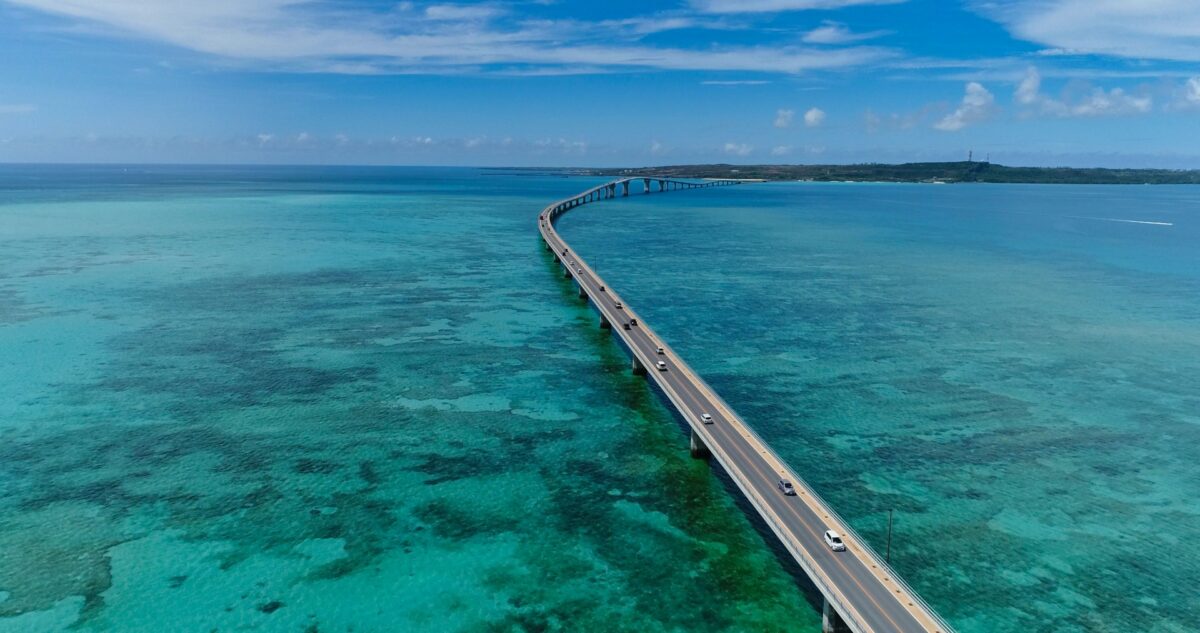
14. Utsukushigahara (Nagano/長野)
Utsukushigahara is a highland area of Nagano prefecture. It’s a popular destination to escape the heat, as well as for motorcycling and driving in summer.
Utsukushigahara is a part of Venus Line, which is a 75km long driveway and is the dream destination for bikers and drivers since it provides beautiful scenery of nature and vast sky.
You can enjoy an easy yet satisfying hike on the gentle hills, and see the unique areas where you can spot weirdly located radio towers and free-roaming cows and horses.
Another attraction is the Utsukushigahara Open-Air Museum which features over 350 sculptures where you can also see unique alpine plants.
Please note that some parts of Venus Line will be closed during November to April (depending on the year) due to ice and snow.

15. Lake Towada (Aomori/青森)
Lake Towada crosses over two prefectures; Aomori and Akita. It’s a caldera lake that was formed by the eruption about two hundred thousand years ago.
Stunning reflection on the surface of the lake and surrounded nature will show visitors the beauty of the season. Some outdoor activities can be enjoyed at the lake, especially kayaking.

16. Shiretoko National Park (Hokkaido/北海道)
Shiretoko National Park is one of the national parks in Hokkaido and listed on UNESCO World Heritage Sites in Japan. In winter, it’s a popular place to participate in the drift ice tour where 80% of the sea is filled with drift ice.
In summer, hike in the vast park where many wild animals and unique plants can be found. Breathtaking scenery of the sea from the cliff is nothing that you can see elsewhere. The popular hiking route is visiting Shiretoko Five Lakes, Shiretoko Pass, Lake Rausu and Furepe Waterfalls. If you are an advanced hiker, try Mt. Rausu for a 8-11 hours hike. If you decide to hike, this area is a brown bear’s habitat so take precautions. There is no bathroom available in the mountain, and a portable toilet is recommended to bring. There are some rules and important information that you should know before starting to climb, so it’s better to stop by at the visitor center, or read their website carefully if you can read Japanese or use the translation.
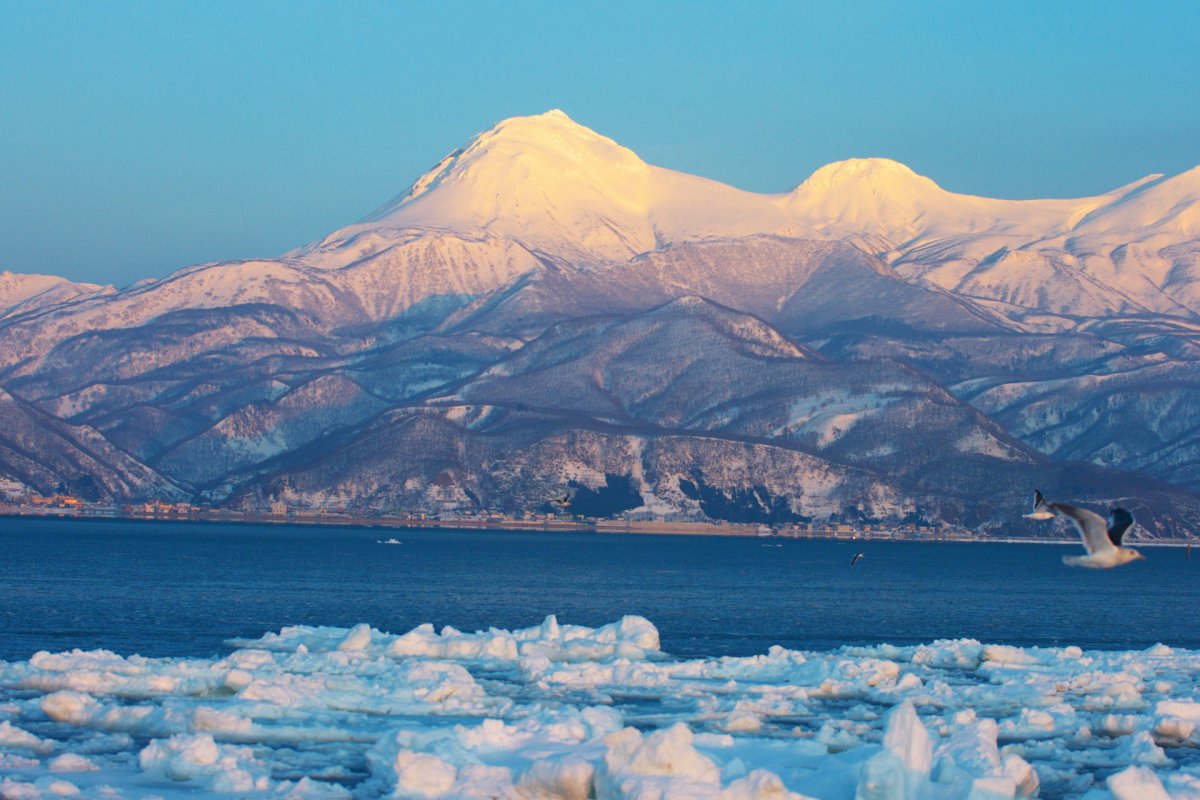
17. Yakushima (Kagoshima/鹿児島)
If you like Ghibli films, do you know that Princess Mononoke is said to be inspired by Yakushima?Yakushima is a remote island that is a part of Kagoshima prefecture located in the south part of Japan. It’s a great spot for hiking enthusiasts since 90% of the island is covered by mountainous areas and forests. The highlight of the hiking route is Jomon Sugi, the large and ancient cedar tree that is estimated to be about 2,000 to 7,200 years old.
You can choose from several hiking routes depending on the difficulty, and after you enjoy the hike, there are some accommodations available on the island. Natural hot spring called onsen in Japanese will help you ease the fatigue from the hike at the end of the day.

18. Shodo Island (Kagawa/香川)
Shodo Island or Shodoshima is a small island located in the Seto Inland Sea. With mild weather throughout the year, the island boasts beautiful olive trees, rich nature and clear blue beaches. It recently got more attention as the instagrammable spots and is becoming one of the popular tourist spots in Japan. Angel Road is the signature spot of the island, a 500 meter sandbar that connects the main island to the three different islands. Twice a day, when it’s the low tide the pathway appears and you can cross the road.
Beside the beautiful nature sites, take a look at the historical sites on the island. Twenty-Four Eyes Movie Studio is a movie studio that recreated Japan’s scenery of the Showa period which is the best photo shooting spot. Other historical spots are the oldest soy sauce brewery and Meiro no Machi (labyrinth town).
The best ways to explore Shodo Island are by car, public bus or rental bicycle.

19. Kamikochi (Nagano/長野)
Kamikochi is a part of the Chubu Sangaku National Park where you can enjoy untouched nature. Located at an elevation of 1,500 meters, you can enjoy hiking from the easy to the difficult level. Recommended spots to visit are Taiso Pond and Kappabashi Bridge which are great spots to see beautiful scenery. Please note that there’s a restriction for a privately owned car entry due to the protection for nature. You can only take a bus or taxi to get to Kamikochi from a certain point. You can park your car at Sawando Parking Lot and Akandana Parking Lot.
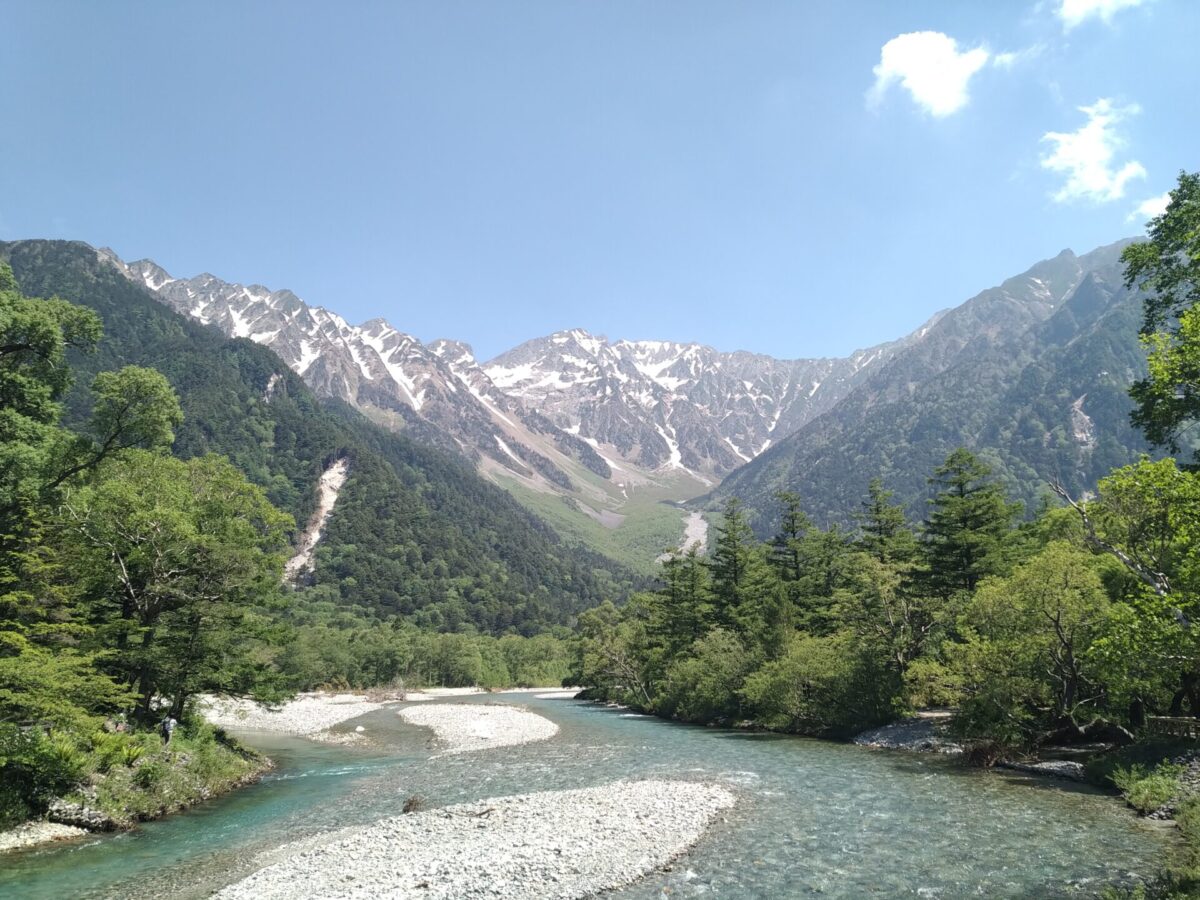
Recommended: Summer Activities in Nagano
20. Jodogahama (Iwate/岩手)
Jodogahama is a scenic beach located in the northern part of Japan, Iwate prefecture.
The scenery combined with white rocks, green color of pine trees and clear blue beach. Jodogahama can be translated as heaven’s beach, and the sunset will explain the reason why it’s called that way. In summer many people come for swimming at the beach, and in winter, the snowy scenery will be presented.

Japan Wonder Travel Tours
For help with planning your trip to Japan and private tours to some of the best tourist spots, please contact us. We can help you put together the perfect itinerary and get a deeper understanding of Japanese culture. All of our tours are with an English speaking, local guide and can be customized according to your wishes. Some of our tours:


Japan has many amazing places to all offer a unique experience, from amazing snow in Hokkaido to rich culture in Kyoto and from tropical beach in Okinawa to modern city life in Tokyo, each place has its own beauty. Of course there are many other amazing places, but these ones are our favourites. If you have no idea where to go for the best experiences, we recommend choosing one that is relatively easy to access and explore. Get exciting outdoor experiences at Mt. Fuji if you prefer somewhere close to nature or learn more about traditions in Shirakawago, conveniently accessible from Nagoya, the largest city in the Chubu region. Kyoto boasts a number of popular tourist attractions including beautiful shrines and temples along with Togetsu Bridge. Find your favorite place and make your time in Japan an unforgettable memory!
Follow us on Instagram, Facebook and Twitter for more travel inspiration. Or tag us to get featured!
Happy traveling!
Articles you may also like
This post may contain some affiliate links. When you click through and make a purchase we may receive some commission, at no extra costs to you.
